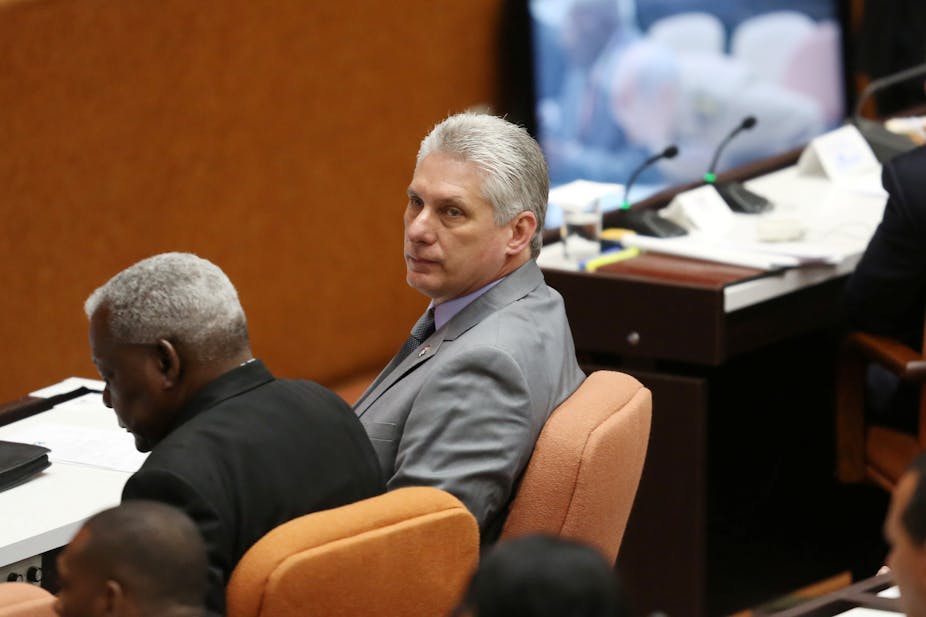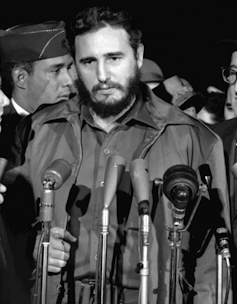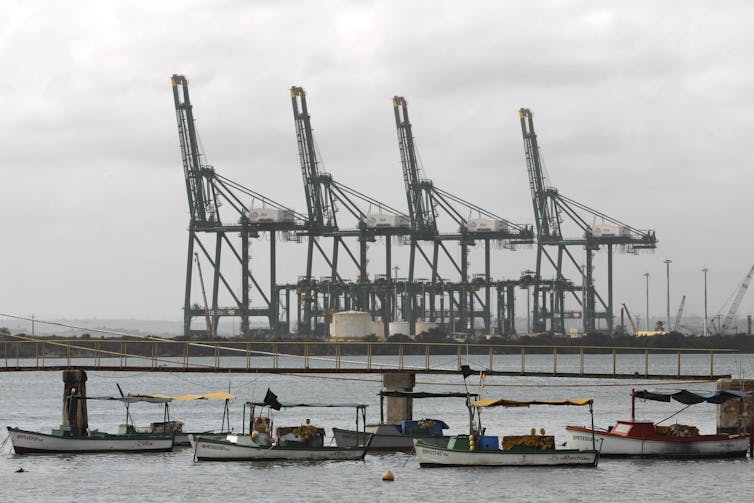
Cuba has a new president – and for the first time in six decades, his last name is not Castro.
Cuba’s National Assembly has elected Cuba’s First Vice President Miguel Díaz-Canel to replace 87-year-old Raúl Castro, who took over as Cuba’s leader in 2006 after his brother Fidel Castro fell ill.
Raúl Castro stepped down in observance of the two-term limit for senior government and party officials that he himself mandated in 2011. In so doing, he opened the door not just for a new president but for a generational transition in Cuba.
This is one of the most important moments I’ve seen in 40 years of studying and writing on Cuba.
Díaz-Canel faces real challenges. Cuba’s economy is weak, relations with Washington are deteriorating and internet expansion on the Communist island has produced a growing chorus of domestic critics.
Who can fill Castro’s shoes?
The political rise of 57-year-old Díaz-Canel represents the final stage of a transfer of power away from the “historic generation” that waged Cuba’s 1959 revolution. The charisma of Fidel Castro, who died in 2016, was for decades a pillar of Cuba’s regime.
Díaz-Canel – a trained engineer who worked his way up from local party leader to first vice president – will have to earn his authority through performance.

Those who have followed his career say Díaz-Canel is a seasoned, pragmatic politician. As a Communist official in his home province of Villa Clara in the 1990s, when Cuba suffered a prolonged economic depression, he rode his bicycle to work rather than take a car and driver.
He appears ill at ease with large audiences but relaxed and congenial in small groups – much like his mentor, Raúl Castro.
As president, Díaz-Canel will still benefit from Raúl Castro’s experience and authority. Castro remains first secretary of the Communist Party – Cuba’s only party – until 2021.
This is arguably a post more powerful than the presidency. The party leadership makes all major economic, social and foreign relations policies, which the president is obliged to carry out.
So I don’t expect any drastic changes in direction from Díaz-Canel – at least, not right away.
What’s in store for Cuba
This political transition is still significant, though. For the first time, the leader of the Communist Party and the leader of the government are different people. Both Fidel and Raúl Castro held both positions simultaneously.
Cuba must now sort out the lines of authority between party and state. As Díaz-Canel staffs government ministries with his own team, he will gain ever more control over how policy is interpreted and implemented.
He will immediately face some tough issues. Cuba’s economy is struggling, dragged down by the dual-currency system Fidel Castro adopted in 1994 to attract cash remittances from Cuban expats.
Raúl Castro has declared that currency reunification “cannot be delayed any longer.” But turning two currencies into one is a tricky business with unpredictable economic consequences.
Díaz-Canel will also face pressure to reinvigorate the Cuban economy by pushing ahead with the controversial economic reform program launched by Raúl Castro early in his tenure, which loosened restrictions on private enterprise and enabled foreign investment in Cuba.
The pace of change has since slowed, frustrating Cubans. If Díaz-Canel opens up Cuba’s economy too quickly, he’ll alienate Communist Party conservatives. Going too slowly will anger reformers.

Another contentious issue is freedom of expression. Public criticism of the Cuban regime has grown as more citizens connect to the internet. Last year, hard-liners launched a campaign vilifying critical bloggers, which – to many onlookers’ surprise – Díaz-Canal supported.
Other prominent Cubans pushed back, though, and the campaign ended without any of the targeted web sites being closed down.
Raúl Castro has balanced conflicting factions with a delicate strategy he described as reform “without haste, but without pause.” Díaz-Canel must now demonstrate he, too, can manage these conflicts.
US-Cuba relations in flux
Finally, the new president has to deal with the mercurial U.S. administration. President Donald Trump has largely outsourced Cuba policy to conservative Cuban-Americans in Congress, led by Sen. Marco Rubio, a Republican from Florida.
In June 2017, Trump declared he was “cancelling” some Obama-era Cuba political reforms and re-tightening parts of the economic embargo.
In October, Trump further battered bilateral ties by downsizing the American Embassy in Cuba after U.S. government personnel suffered unexplained health problems there. He also expelled 17 Cuban diplomats from Washington.
Recent Trump appointments do not bode well for the future of U.S.-Cuban relations. The incoming secretary of state, Mike Pompeo, was a vocal opponent of Obama’s rapprochement with Havana. National security adviser John Bolton once deemed Cuba part of an “axis of evil,” falsely accusing it of developing biological weapons.
Anticipation and trepidation
In December, I was in Havana, a city where the benefits of Raúl Castro’s economic reforms are most tangible. Cubans I spoke with there seemed ready for younger leadership and excited about the impending power transition.
But 80 percent of Cubans have always had a Castro as their president. So the anticipatory mood is leavened by trepidation: People fear that instability may accompany this major political change.
![]() If Díaz-Canel can deliver on the economy – the top priority for most Cubans – he’ll be judged a success. If not, he will face a rising tide of discontent from a population impatient for change.
If Díaz-Canel can deliver on the economy – the top priority for most Cubans – he’ll be judged a success. If not, he will face a rising tide of discontent from a population impatient for change.
William M. LeoGrande, Professor of Government, American University School of Public Affairs
This article was originally published on The Conversation.

